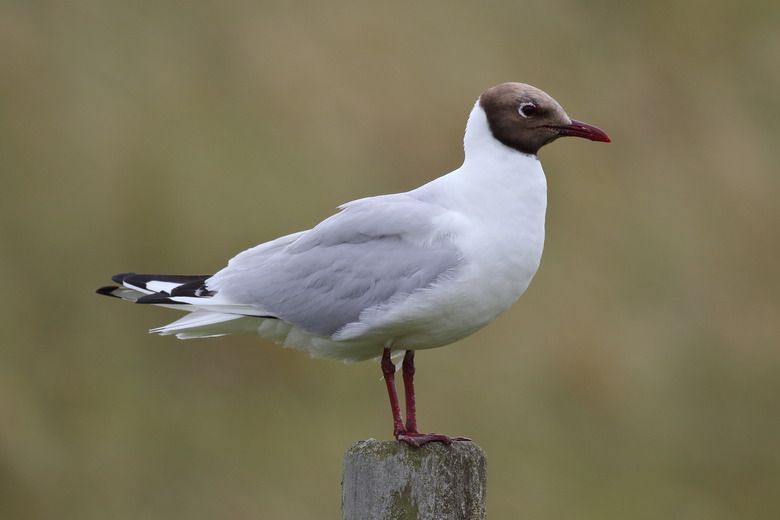Body Parts Of A Seagull
Seagulls are birds of the family Laridae, with more than 40 known species, most of them living near the coasts. Large species, such as the Thayer's gull (Larus thayeri), can have a wingspan of about 55 inches, weighing 3.5 lbs. The great black-backed gull (Larus marinus) is the largest of all, with a wingspan of about 63 inches and a weight around 4.8 lbs, while the little gull (Larus minutus) is the smallest, wieghing only 2 lbs. with a wingspan that measures 25. The parts of a seagull include the head, wings, legs, thorax and abdomen.
Head
Head
Like most birds, seagulls have small heads in relation to their bodies. A seagull's head features a long beak with a red spot on the tip. This spot is made of chemicals called carotenoids, and play a important role during mating and chick feeding. Chicks can spot the red dot and peck at it to ask for food, which the parents regurgitate. The head also contains two ear-holes and a pair of eyes with nictitating membranes, which is a transparent third eyelid that provides extra-protection. Seagulls have a keen eyesight.
Wings
Wings
Seagulls have pneumatized, or hollow, bones in their wings, and most parts of their bodies. Humerus, ulna and radius are the bones that form the wings of seagulls and other birds.The long feathers found in the seagull wings are called remiges, and are divided in primaries, secondaries and tertials, according to size and specific location. In addition to long feathers, the strong muscles seagulls have in their wings and thorax help them to reach speeds of up to 70 miles per hour when flying. The wingspan of a seagull varies according to the species.
Legs
Legs
Seagulls have orange to dark red, black or brownish thin legs. The bones that form their legs are often the heaviest in their skeleton and include the femur, the tibiotarsus or shin and the fibula. Feet are adapted for swimming, but are also functional for walking. Their feet are "webbed," a common term for feet that have a membrane between the toes. Webbed feet are present across many aquatic species.
Thorax and Abdomen
Thorax and Abdomen
The thorax supports the wings and contains vital organs, such as the heart and the lungs. The abdomen is located in the inferior part of the body, and contains part of the digestive system, reproductive and excretory organs. The plumage covering thorax and abdomen is often white in most seagulls species, but the lava gull (Leucophaeus fuliginosus), an endemic species from the Galapagos Islands, has a dark-grey body. Younger seagulls are generally brown to tan in most species.
References
- "Biology: The Unity and Diversity of Life"; Cecie Starr et al.; 2005
- Bird News Network: Seagulls
Cite This Article
MLA
Zinni, Yasmin. "Body Parts Of A Seagull" sciencing.com, https://www.sciencing.com/body-parts-seagull-8568454/. 22 November 2019.
APA
Zinni, Yasmin. (2019, November 22). Body Parts Of A Seagull. sciencing.com. Retrieved from https://www.sciencing.com/body-parts-seagull-8568454/
Chicago
Zinni, Yasmin. Body Parts Of A Seagull last modified March 24, 2022. https://www.sciencing.com/body-parts-seagull-8568454/
